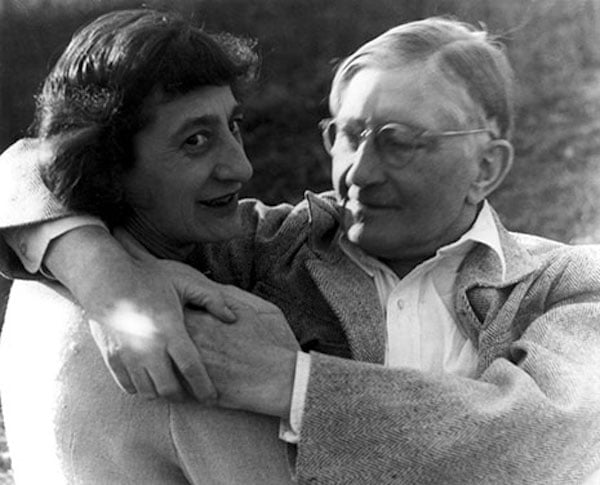
Photo: Theodore Dreier via Josef & Anni Albers Foundation
On October 28, MUDEC, Milan’s new ethnographic museum, will launch the exhibition “A Beautiful Confluence: Anni and Josef Albers and the Latin American World,” which will reveal a lesser-known facet of the legendary Modernist couple Josef and Anni Albers: their deep interest in Latin American cultures.
The exhibition gathers a selection of artworks by the two artists—including paintings, textiles, drawings and lithographs—alongside the 150 extraordinary pre-Columbian artifacts they had collected over three decades.
Unknown, fragment.
Photo: © The Josef and Anni Albers Foundation
Shortly after the Alberses, fleeing the Nazis, emigrated from Germany to the United States in 1933, they began traveling to Central and South America to explore the cultures that had so fascinated them from afar. Between 1934 and 1967, they visited Cuba, Mexico, Peru and Chile, completing up to 14 trips in the southern continent.
The Alberses had a strong affinity to the simple geometrical forms and functionality of the objects produced in pre-Columbian cultures—principles that also underpinned the ethos of the progressive arts and craft school, Bauhaus, where Josef taught—and amassed a superb collection of artifacts and figurines during their travels.
Josef Albers, To Mitla (1940)
Photo: © The Josef and Anni Albers Foundation
The exhibition, which will coincide with the unveiling of MUDEC’s permanent collection, will also feature previously unseen photographs and photo-collages by Josef Albers.
The MUDEC, which is part of the ambitious Città delle Culture art complex in Milan, opened in March surrounded by controversy. The $66 million complex was designed by British star architect David Chipperfield, who after a long-winged and fraught involvement, disowned the project, following a row over the flooring material used.
David Chipperfield’s Città delle Culture in Milan
Photo via: Milano City Council
“A Beautiful Confluence: Anni and Josef Albers and the Latin American World” will run at MUDEC, Milan, from October 28, 2015-March 13, 2016.